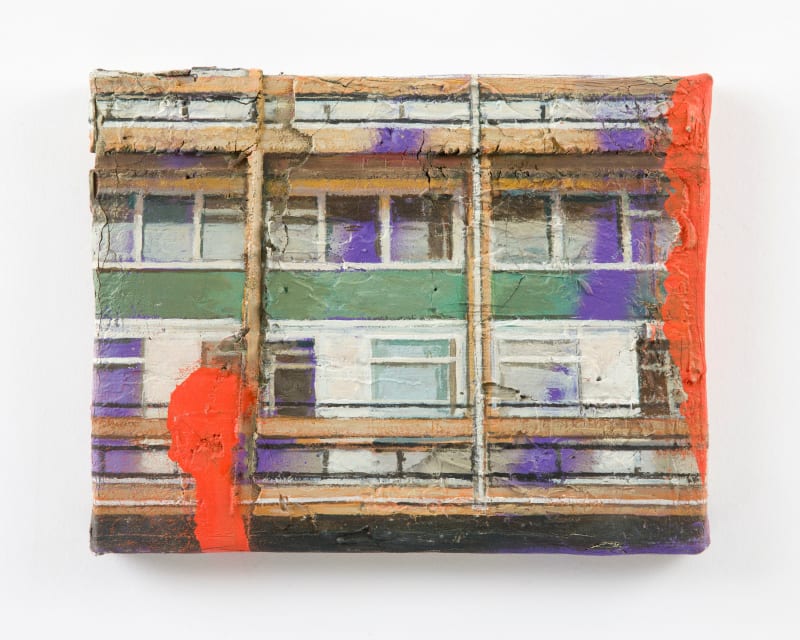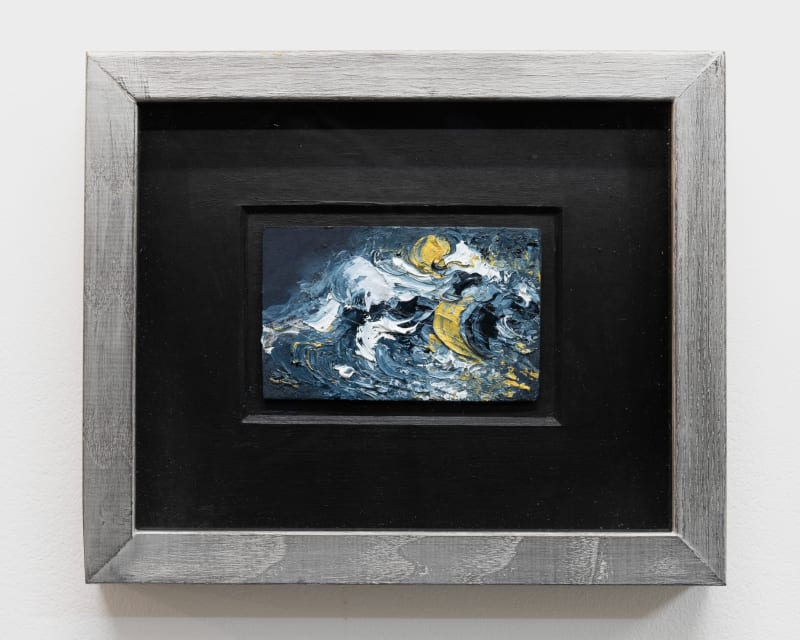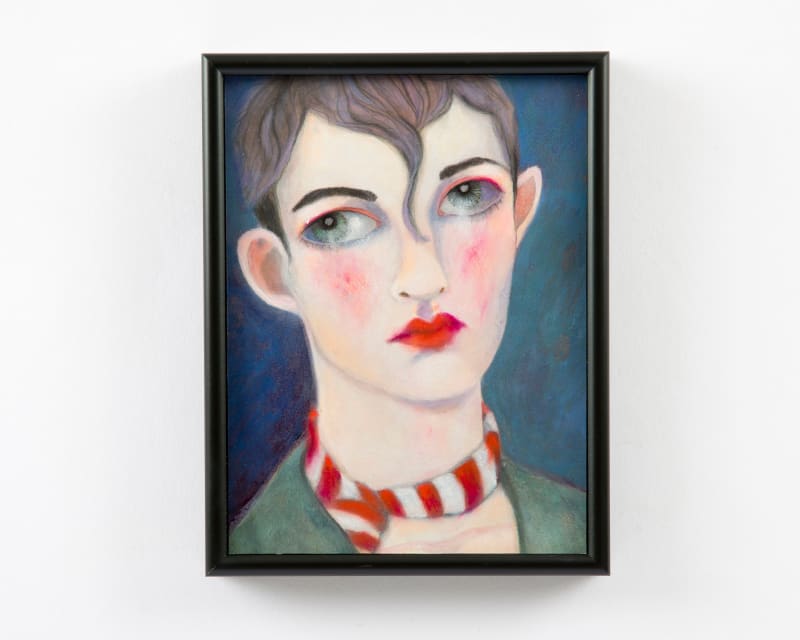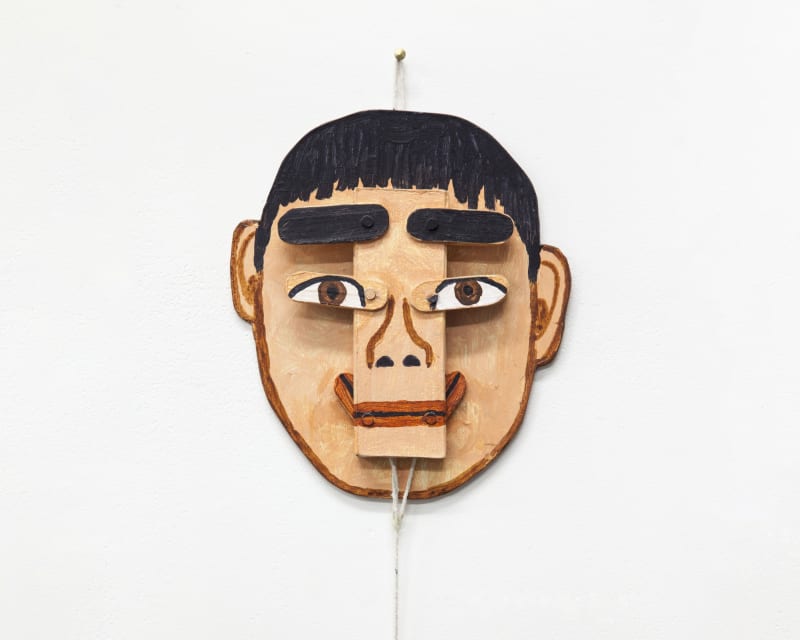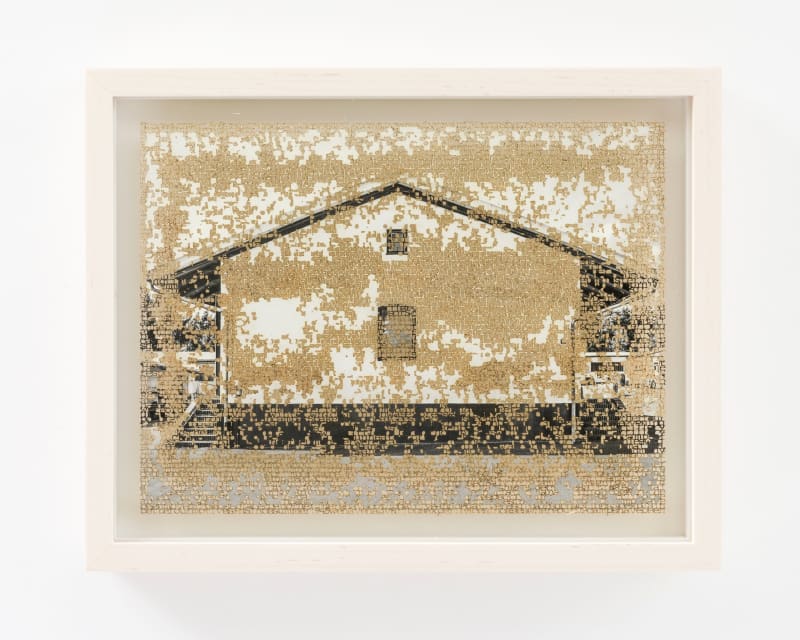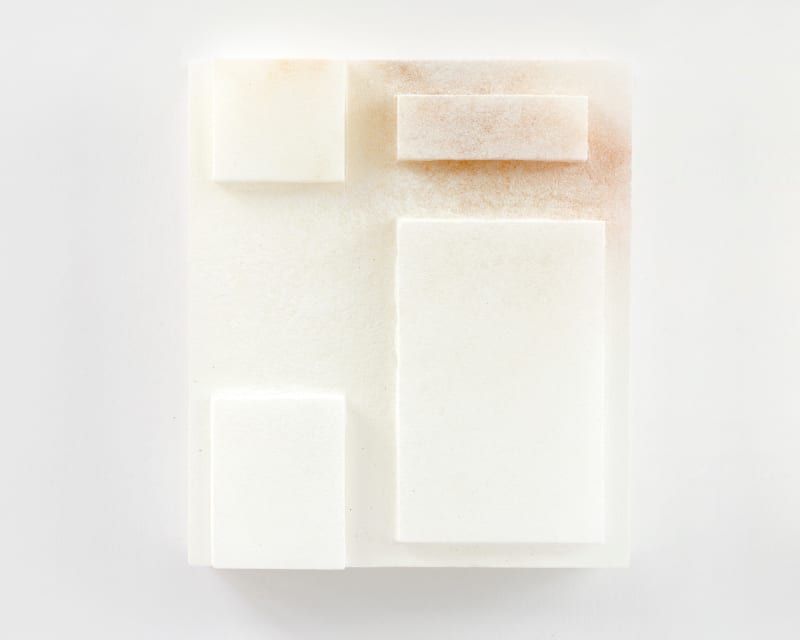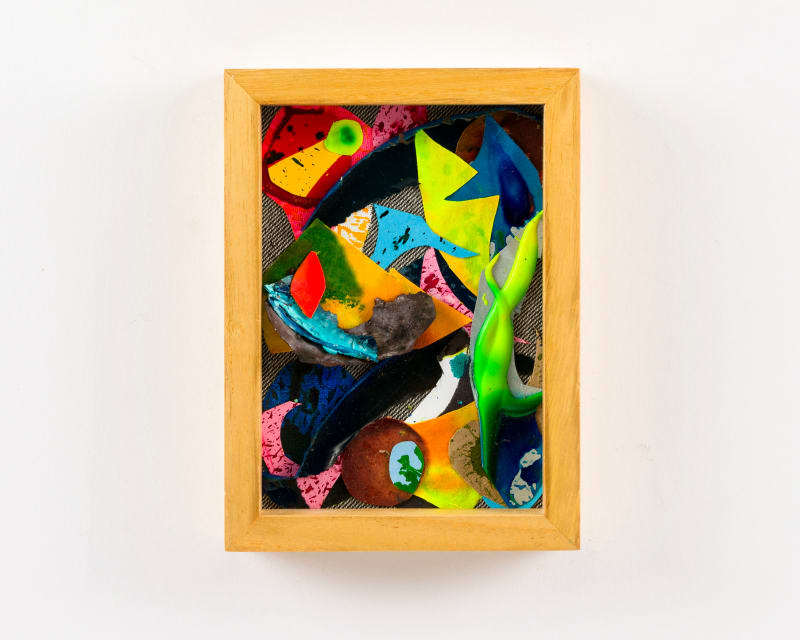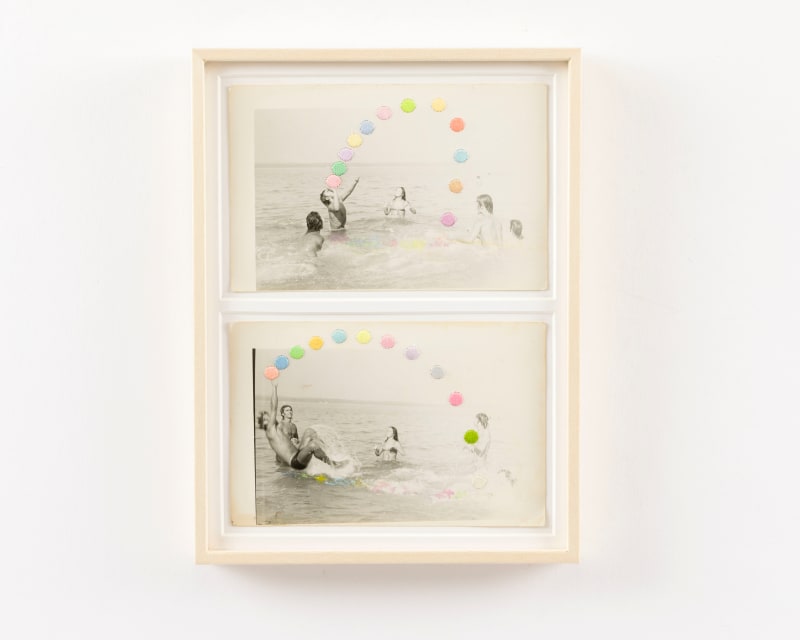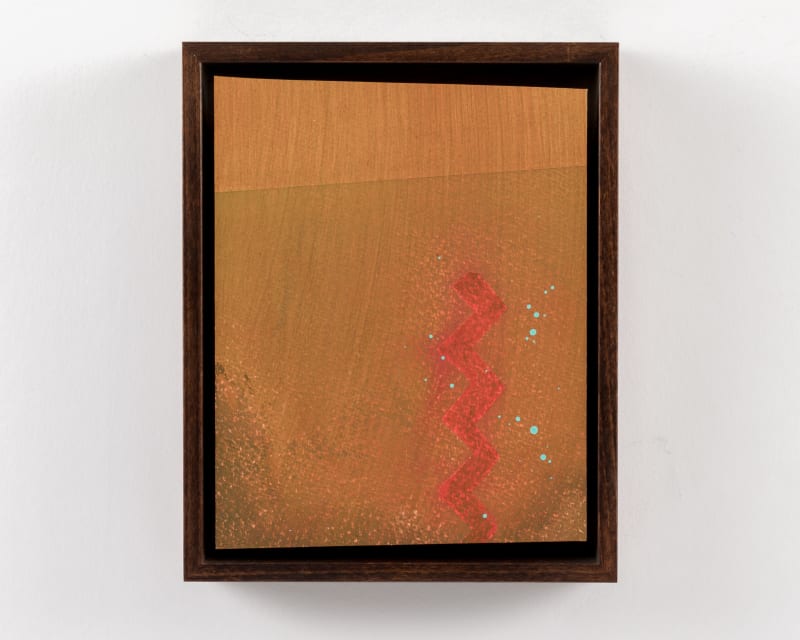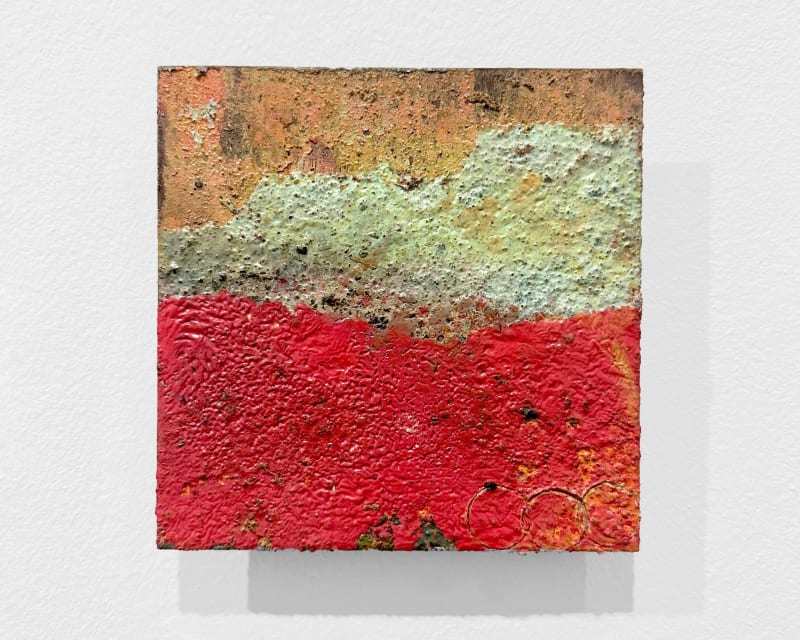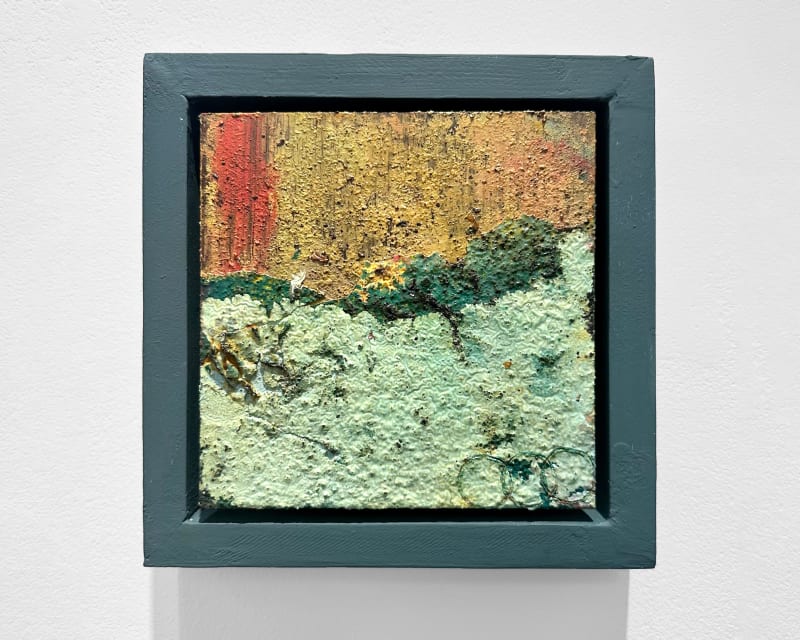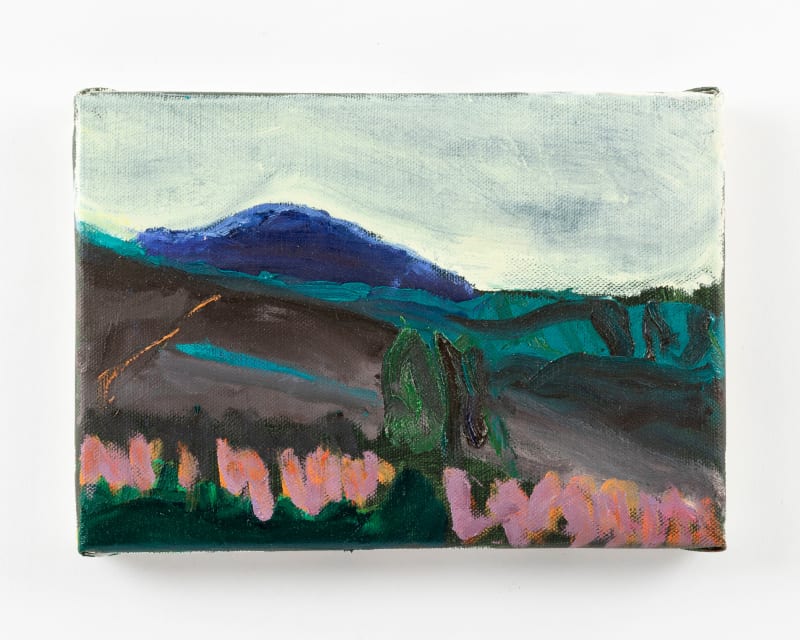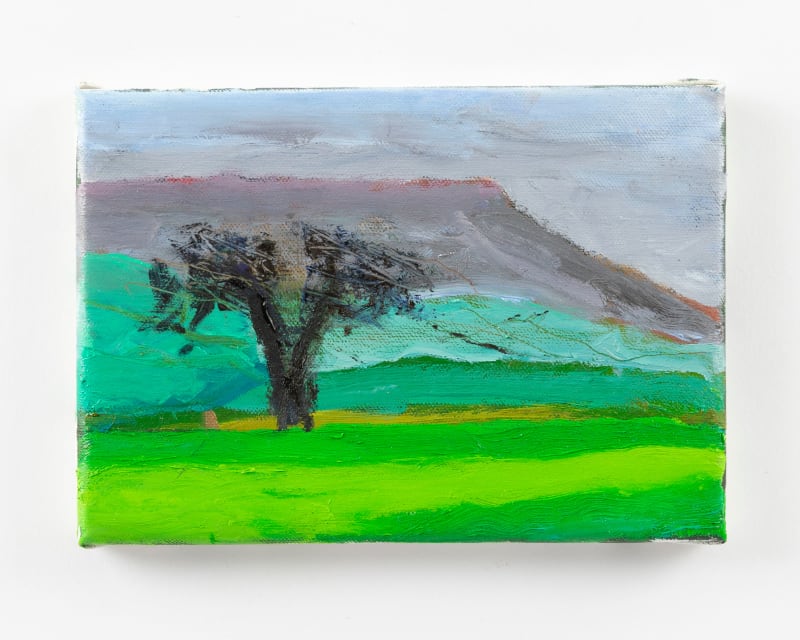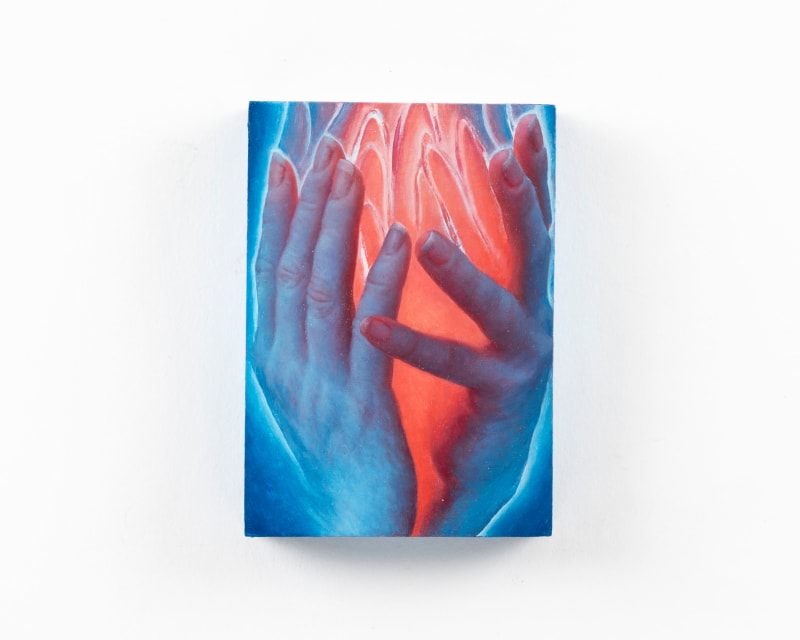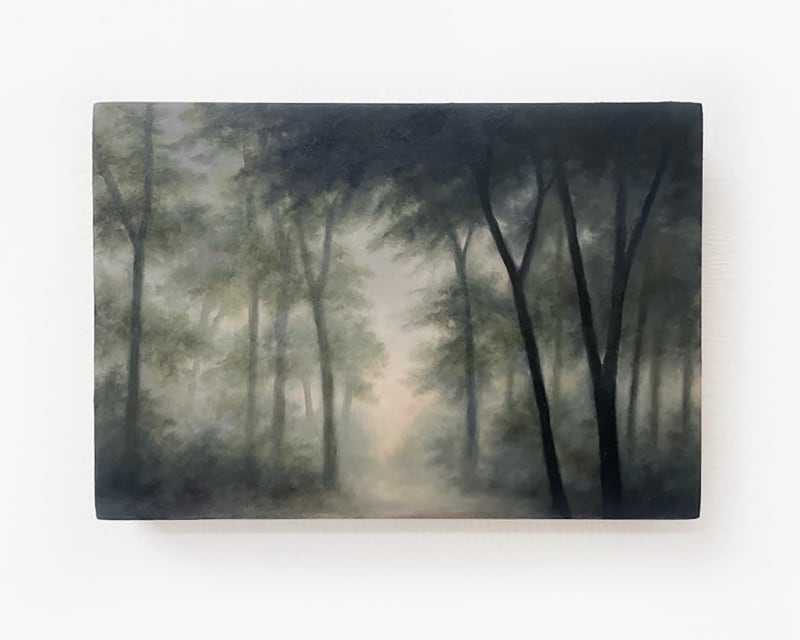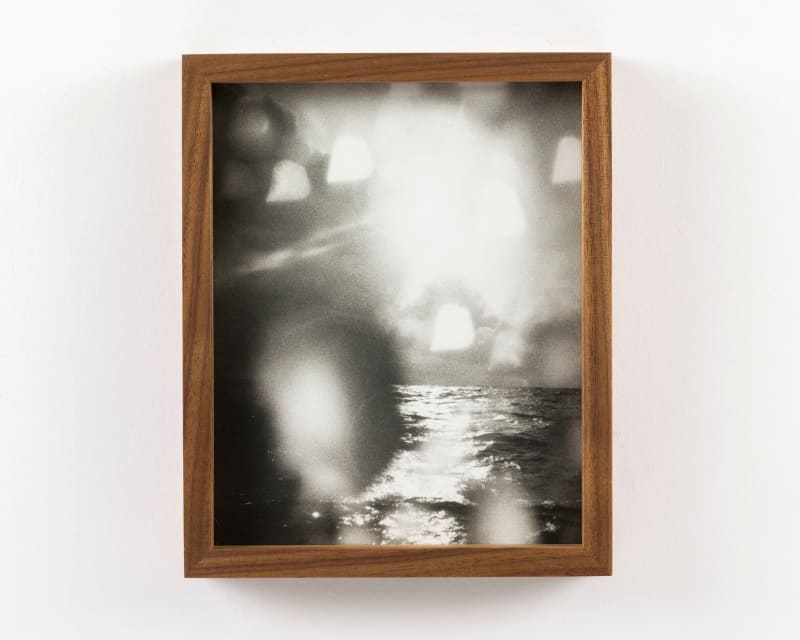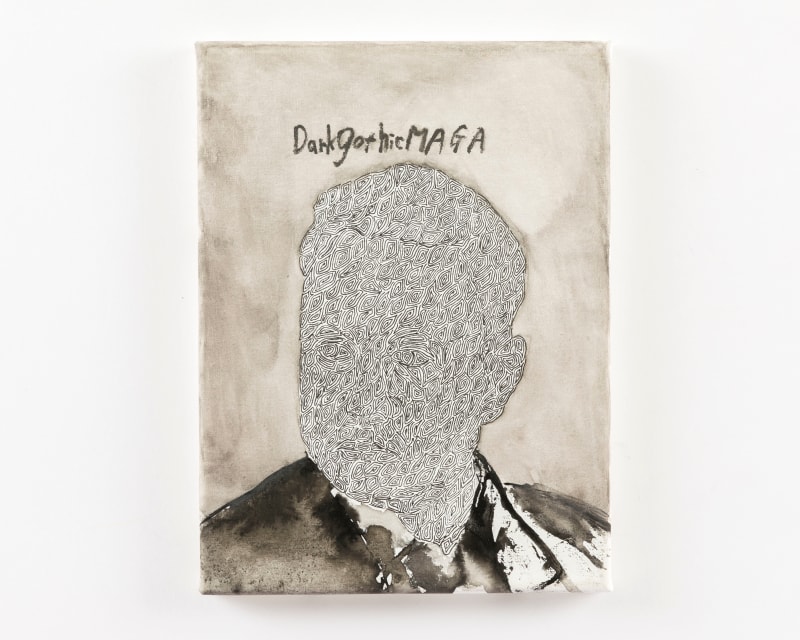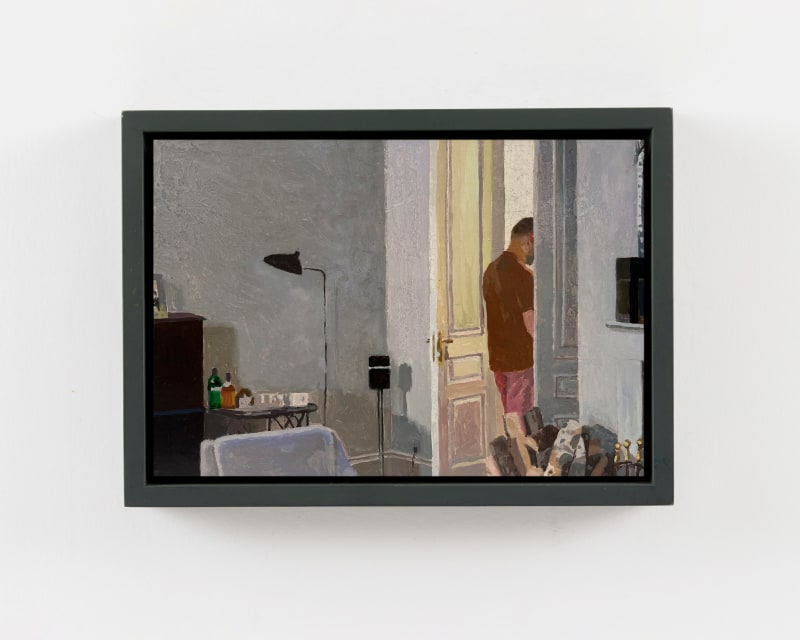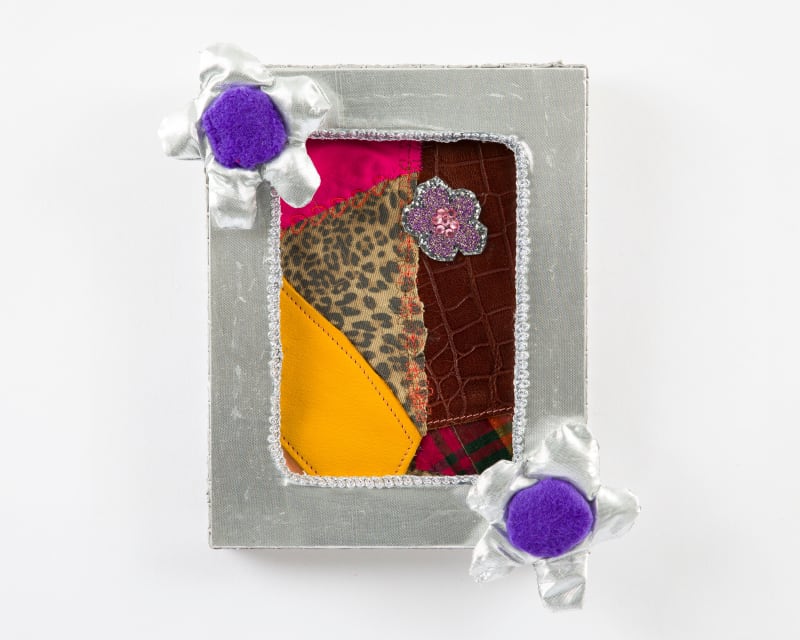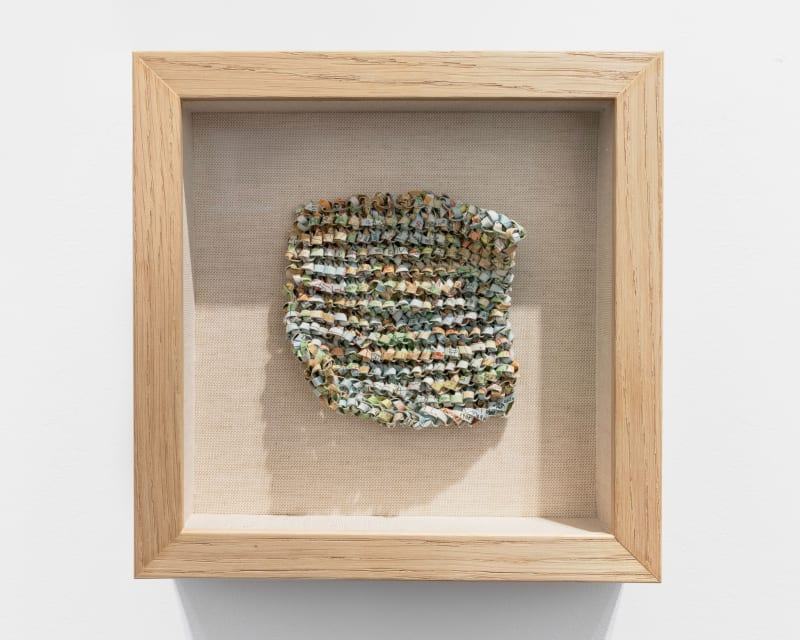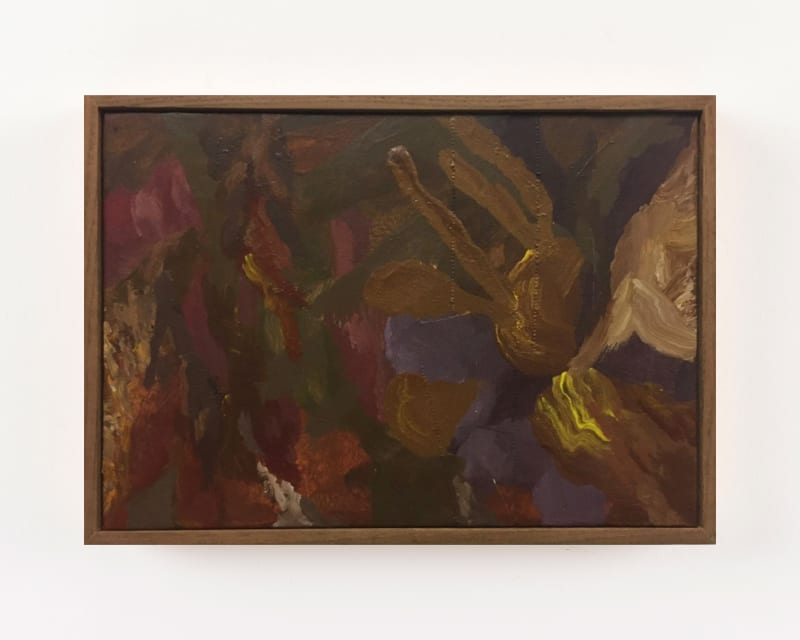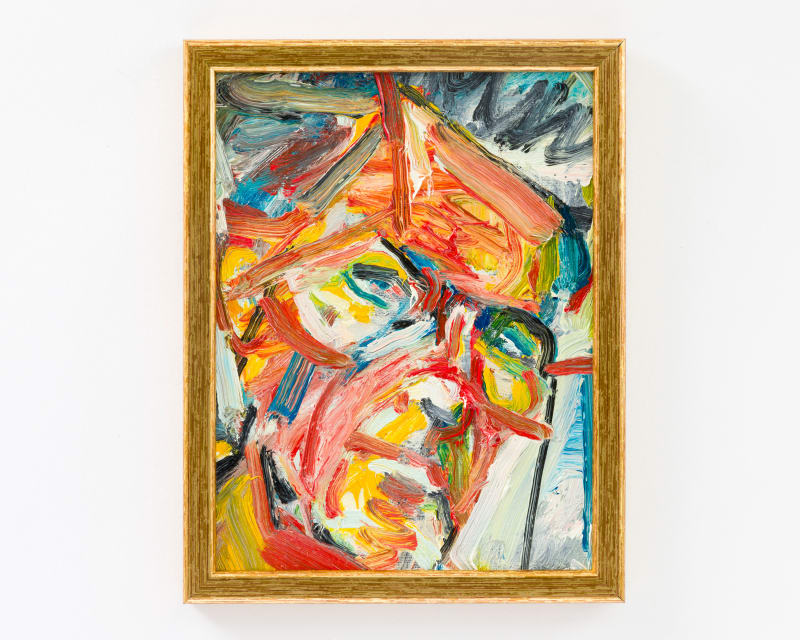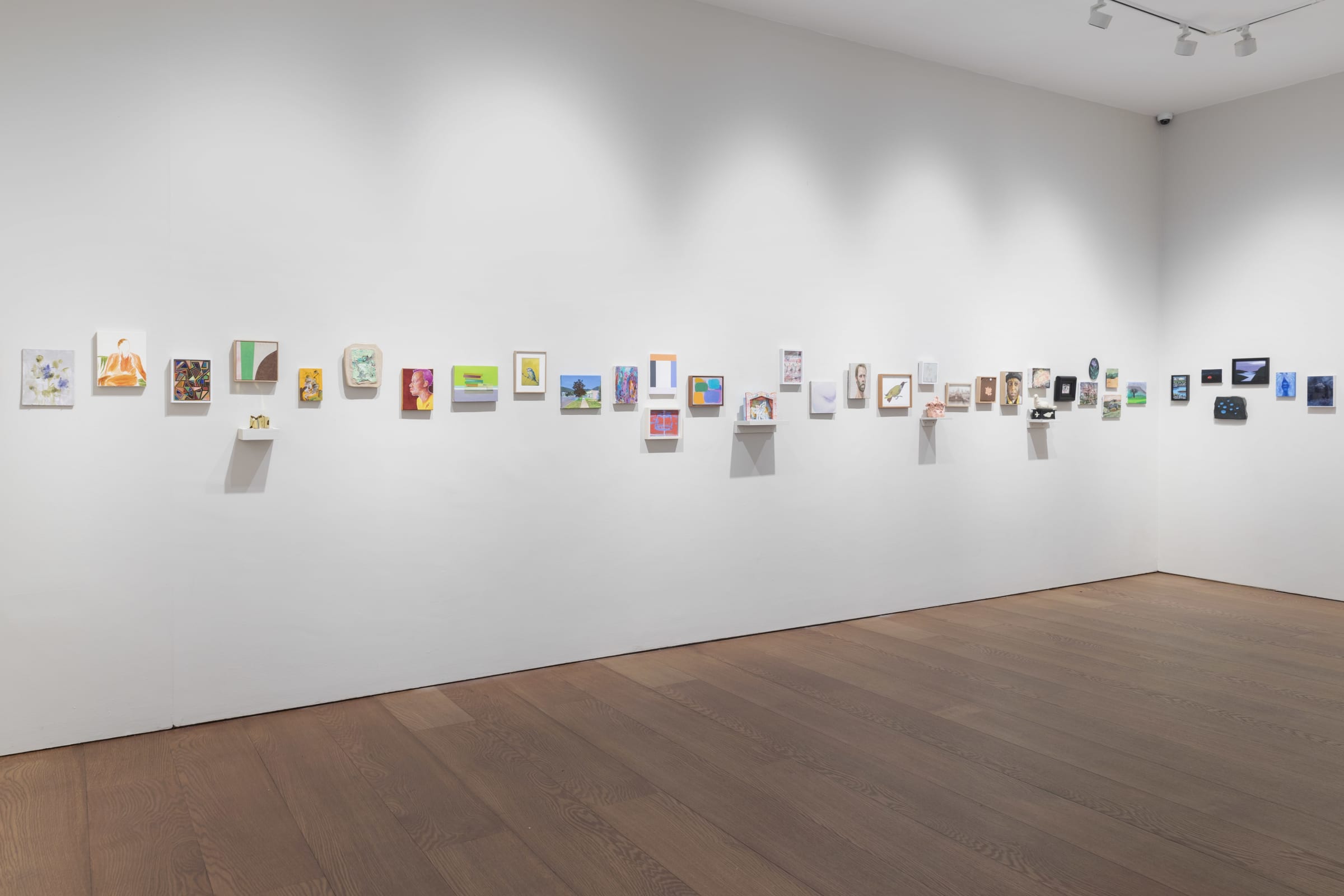
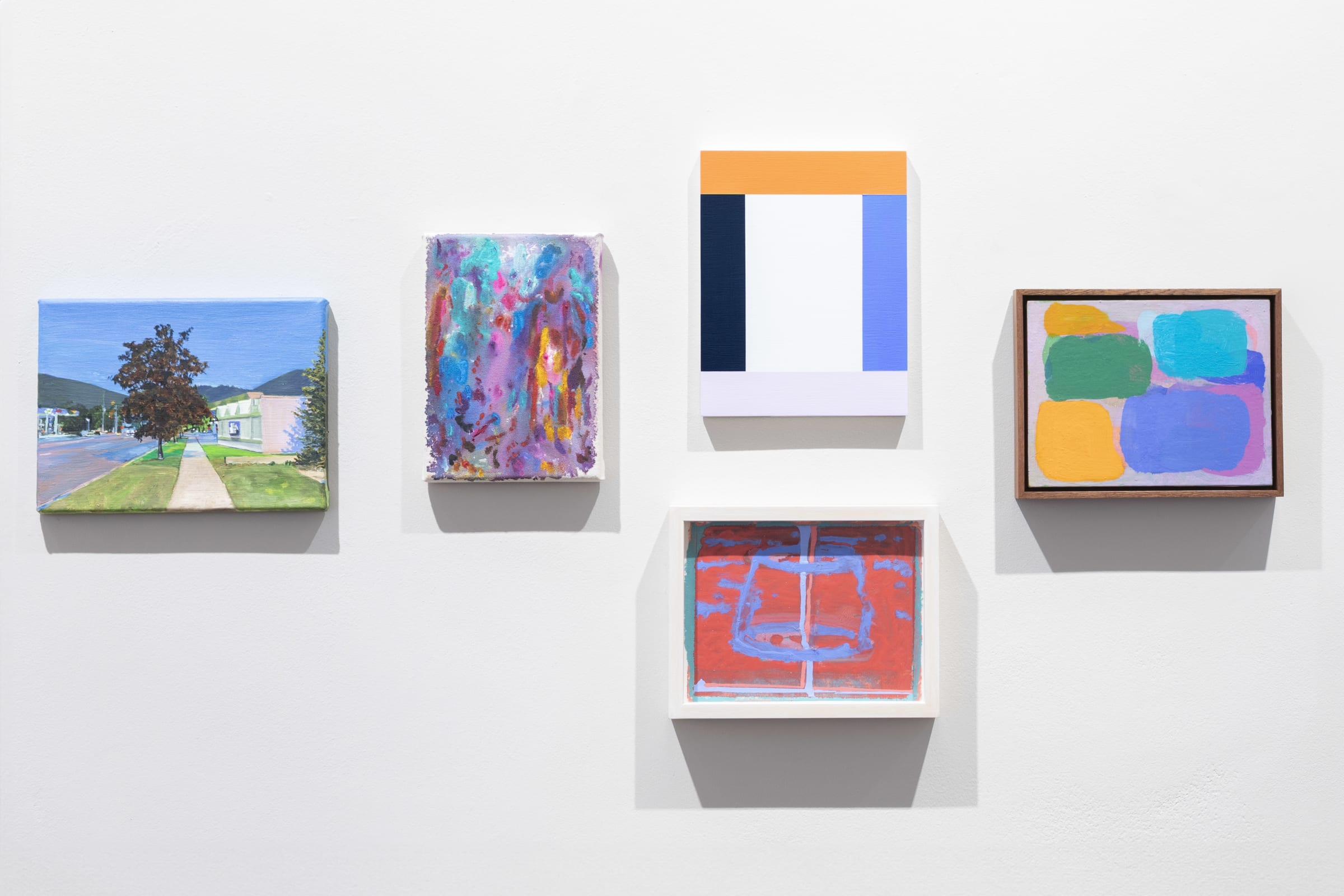
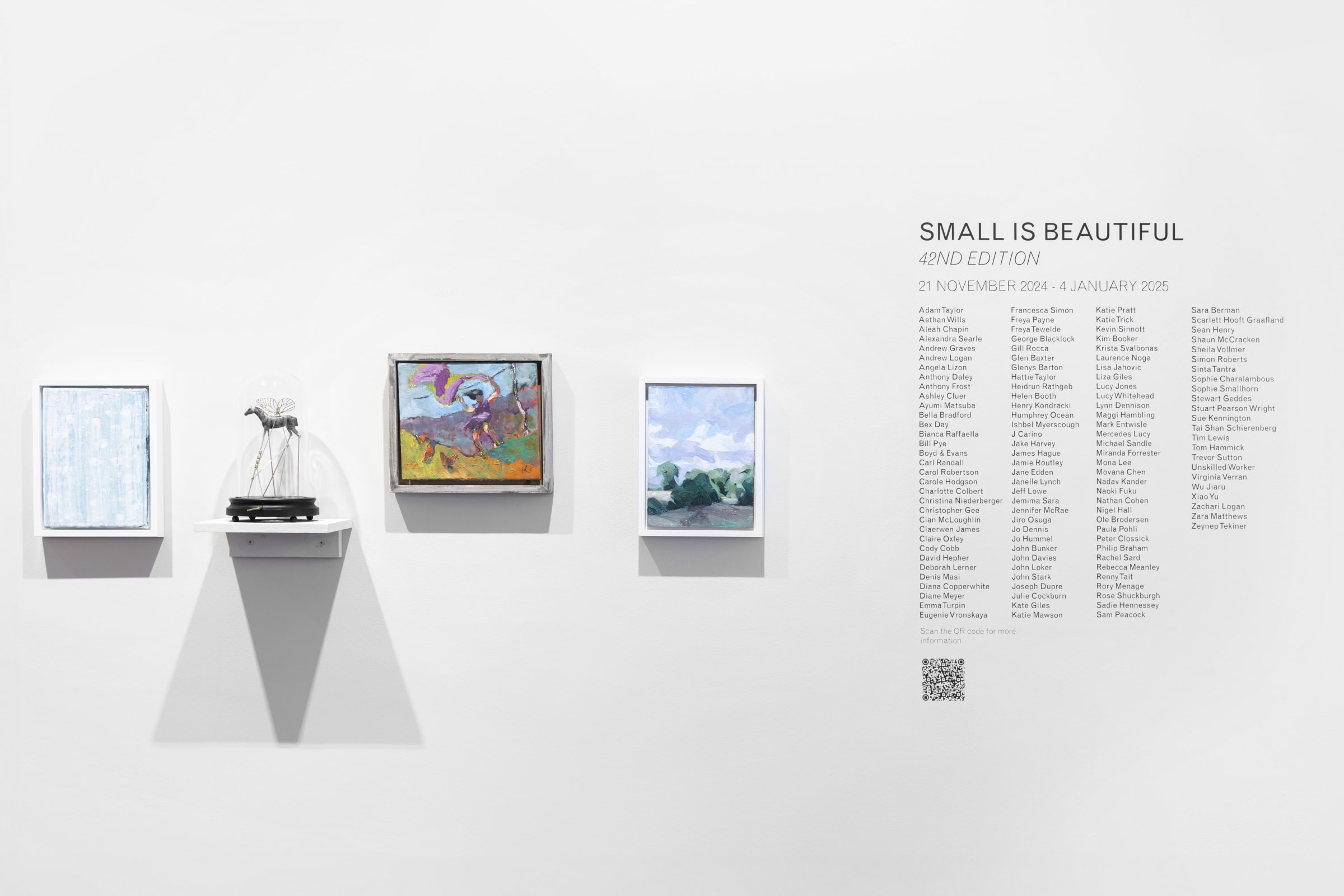
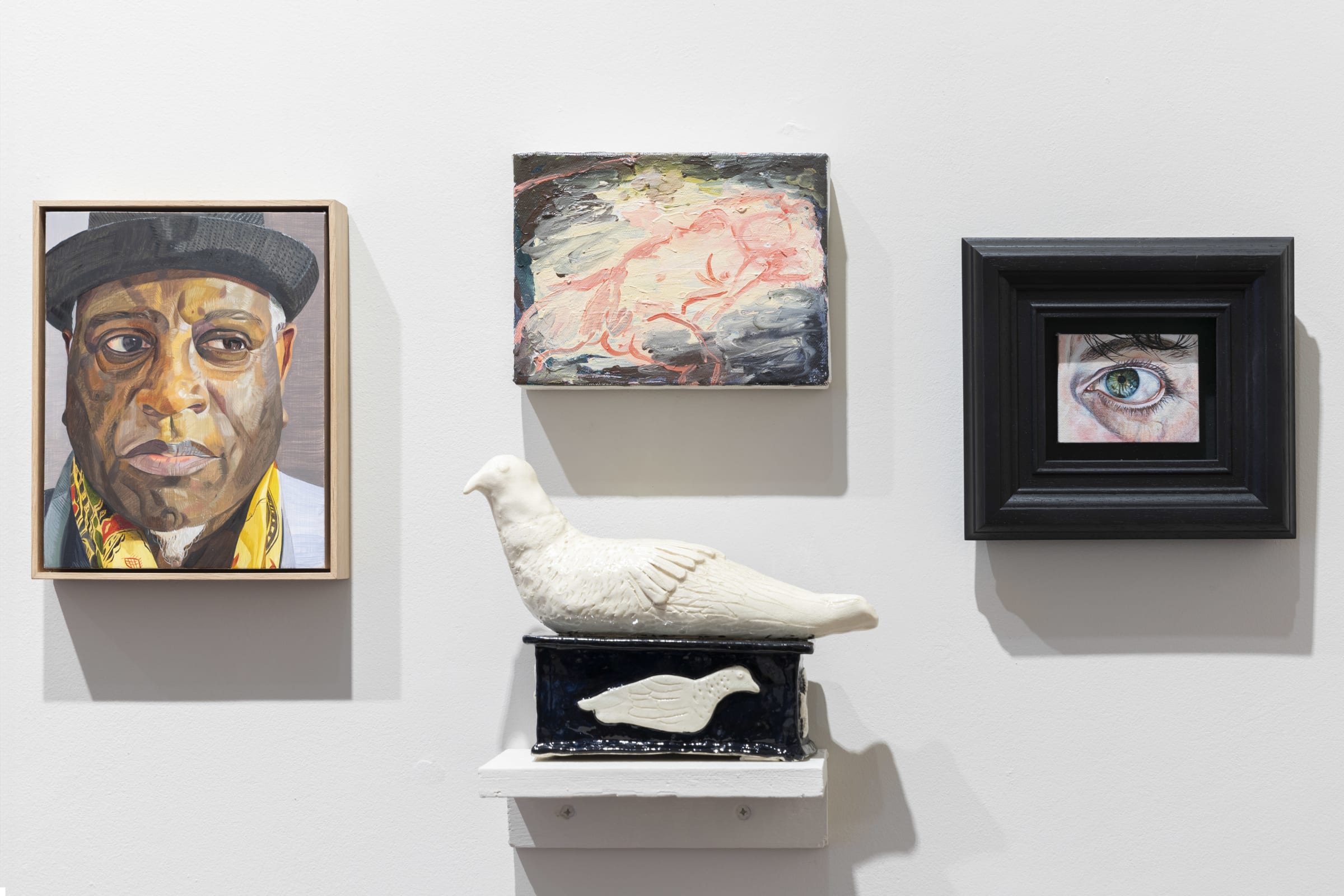
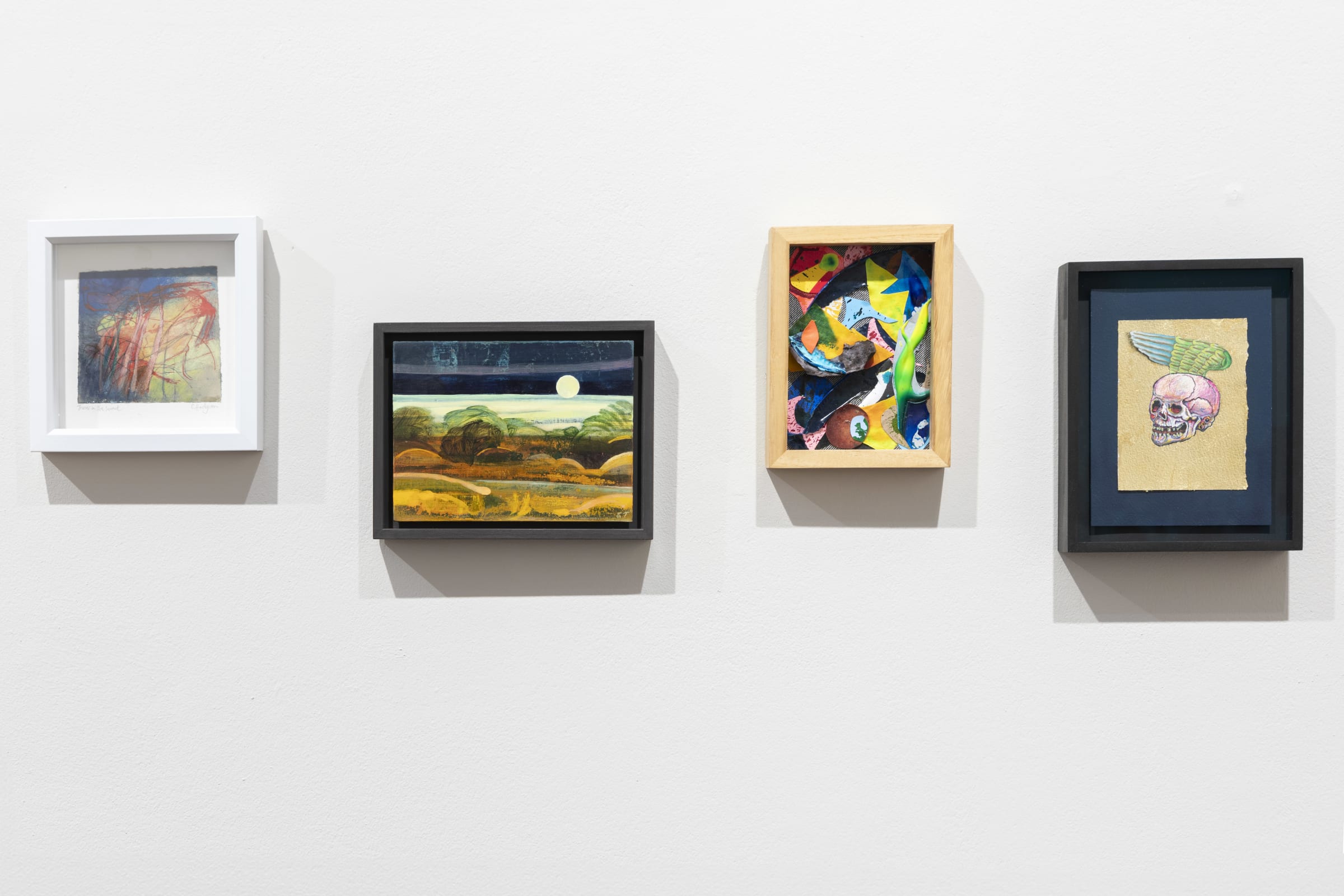

Small is Beautiful
42nd Edition
Overview
Exhibition tour
David Hepher (b 1935)
For over six decades David Hepher has centred his practice on the urban landscapes of south London, where he lives. Exploring the scale and 'austere grandeur' of the expansive modern social housing estates built in the 1960s and 70s, Hepher was attracted to the formal beauty of their grid-like structures and by the physical and emotional traces of their many inhabitants. As Hepher replicates a builder's application of textured and deteriorated facades, pushing his paintings to the brink of abstraction, his multivalent work has both celebrated and mourned modernism in modes that are futuristic and nostalgic, utopian and entropic. These smaller works with details from an estate at Elephant & Castle, London, distill Hepher's reflections further.
David Hepher studied at Camberwell School of Art and then the Slade School of Art, London, where he later became Professor and Head of Painting. His work is held in public collections including Tate and the Victoria and Albert Museum.
Alexandra Searle (b 1992)
Alexandra Searle is a London-based sculptor. After studying Fine Art at Newcastle University graduating in 2015, she went on to complete an MFA in Fine Art Sculpture from the Slade School of Fine Art in 2019. Drawing upon the intersection of medical themes and the human condition from personal experiences with anxiety and hypochondria, Searle manipulates and exploits the behaviour of materials in order to physically depict moments of stress, tension and expectation. Primarily working with mouldmaking and casting, she captures soft or malleable materials put under pressure, just before the point of collapse, as a way of playing upon the delicate and temporal nature of the corporeal existance. Her works expose familiar fragilities and aim to dig into the soft tissue of the materials she uses.
Laurence Noga (b 1961)
London-based Laurence Noga is an artist, curator and writer. He graduated from Byam Shaw, Central St Martins 1991. He was shortlisted for the John Moores Painting Prize in 2018 and exhibits widely. Noga lectures for the University of the Arts London (UAL) and belongs to the APT community of artists in South London.
Noga’s approach explores a personal iconography and phenomenology. Using found objects in his father’s garage, such as washers or sheet music, help make the choices of colour and structure (his father collected hundreds of packets, washers, door- knobs, sheet music, menus, wood shapes, or tools). The choice of colour and structure often comes from his memory of his childhood - left sitting in smoky jazz clubs listening to his mum sing, or visits to his dad’s work, restaurants such as Le Caprice.
Noga is drawn towards the intangible and intimate nature between painting, collage, and assemblage, exploring and utilizing unexpected combinations of multi-level colour and surface construction. Physical processes fluctuate between instinctive decisions (often with collage) collisions of geometry and the unpredictability/predictability of colour relationships.

Mercedes Lucy
Mercedes Lucy's practice centres around her passion for ceramics combined with drawing from life and illustrative work, expressed in vigorous brushwork and mark-making. Recurring themes include domesticity, feminism, motherhood, grief, and identity, often with tongue-in-cheek humour.
The slow process of ceramics compliments my innate urge to rush, whilst creating artwork that is ‘useful’ relieves the female guilt of creating something that, arguably, in its’ truest form may not be considered necessary.
Mercedes Lucy lives and works in Margate, Kent, UK, where she is a studio holder at TKE Studios.
Cody Cobb (b. 1984, Louisiana)
Cody Cobb is a photographer currently based in the Mojave Desert, USA. His photographs capture brief moments of stillness from the chaos of nature. For weeks at a time, Cobb wanders the American West alone in order to fully immerse himself in seemingly untouched wilderness. This isolation allows for more sensitive observations of both the external landscape as well as the internal experience of solitude. Through subtle arrangements of light and geometry, the llusion of structure appears as a mystical visage. These portraits of the Earth's surface are an attempt to capture an entanglement of the observer and the observed.
Cody's work has been exhibited around the world and featured in publications including National Geographic, WIRED Magazine and The New York Times.



Sinta Tantra (b 1979)
These paintings have been inspired in part, by Tantra's reading of Paul Scheerbart's short novel, The Light Club of Batavia (1912), which revolves around the construction of a spa that bathes its users not in water but in light. 'I love the magnetic appeal of gold, its energy-given properties throughout the ages,' says Tantra, noting the material's associations with vanity, wealth and power. In the foreground of the paintings, silhouettes and outlines were traced from sketches made over the summer period of the tropical valley overlooking her family's house in Ubud, Bali. This balancing act between light and dark, abundance and minimalism, reflects an internal conflict highlighted in the novel, relating to the human and environmental consequences of colonialism, modernism, and tourism today.
Sinta Tantra is interested in the interplay between colour, light, geometric and organic forms. Her paintings and installations are created in response to time and space, designed to subtly transform throughout the day, offering shifting moods and perspectives. Whether produced on a monumental scale or precisely rendered on canvas, her compositions employ a universal visual language that shifts the focus away from meaning to the emotional and physical experience. Born in New York to Balinese parents, Tantra grew up in London where she studied at the Slade School of Fine Art (2003) and the Royal Academy Schools (2006). Her Balinese heritage is central to her practice. Typically working in series, her compositions use repetitive forms reimagined as if visualising a thought process or searching for a sense of balance while her choice of materials reflects on personal, social and cultural histories. In recent years, Tantra has embraced a darker palette, exploring shades of blue and gold leaf to evoke depth, light, and reflection in her work.
Jemima Sara (b 1997)
Jemima Sara merges diaristic texts with the figurative - incorporating everyday life and freedom of expression into her work. Jemima's formal training in BA Puppetry: Performance & Design at The Royal Central School of Speech and Drama (graduating in 2018) followed by a MA in Fine Art: Drawing at Camberwell (graduating in 2021) has enabled her work to embody the interplay between text, figurative paintings and performative installations. The drawings and paintings Jemima creates are journal-like entries, they show the daily tumultuous experience of the mundane existence, but also delve deep into the subconscious and conscious with authenticity. Each work is a cathartic personal exploration, inviting audiences to decode the intricate layers of meaning embedded within.


